Technology for nonprofits: Building trust and increasing impact
Technology for nonprofits: building trust and increasing impact
Nonprofits employ 12.3 million people and spend almost $2 trillion a year in the U.S. — from billions in payroll costs to everyday expenses like food and rent. But inflation, interest rate hikes, and market uncertainty have pushed organizations to make the most of limited resources. With prices on the rise, nonprofits are fighting to meet the needs of those they serve while losing volunteers to high gas prices and scrambling to recruit and retain staff.
Without enough staff to meet their needs, some nonprofits are struggling to deliver on their promises. If nonprofits can’t put donations to good use — or prove they’re using their resources effectively — they’ll lose the trust that keeps them operational.
The public wants to see nonprofits consistently deliver on their promises. This is the most important trust variable across current and likely nonprofit donors as well as across generations.
That’s why nonprofits need to leverage the right technology to fill the gaps and help reach their potential. From donation management platforms to online payment processing tools, nonprofits can use no-code online software to prioritize innovation and community-building.
Over the next few chapters, we’ll discuss why digital transformation for nonprofits is essential to control costs, deepen engagement, and prove impact, plus how to create a successful digitization strategy.
How nonprofit technology solutions help control operating costs
Compared to for-profit companies, one of the biggest challenges nonprofits face is a lack of operating funds. According to the Nonprofit Finance Fund, less than 25 percent of nonprofits have more than six months of cash in reserve — and 10 percent have less than a month’s worth. Without consistent, adequate funding, nonprofits may not be able to pay employees fairly or host fundraisers, let alone keep their doors open long enough to impact their community and cultivate donor trust.

Less than 25 percent of nonprofits have more than six months of cash in reserve.
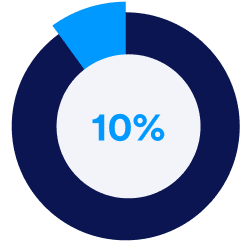
10 percent have less than a month’s worth.
The less money you have, the less you can support your workers. The more employees and volunteers you lose (especially in a volatile market), the less work you can accomplish. But with nonprofit technology solutions, organizations can operate more efficiently.
Consolidate systems with no-code solutions
With the right technology, your organization can create processes that unite your departments’ efforts. No-code technology solutions allow nonprofits to build powerful applications and workflows regardless of programming experience, limiting the need for a specialized IT team.
Through built-in third-party integrations, many of these programs consolidate existing processes and disparate programs, boosting collaboration by serving as a single solution everyone can access. Cloud-based programs also prevent nonprofits from relying on servers that are vulnerable to hacks as well as crashes during times of high traffic.
With this kind of technology, nonprofits can
- Build customized processes that match the nonprofit’s size, budget, and mission
- Manage donors, volunteers, staff, inventory, and fundraising events in one secure platform instead of several
- Enhance existing systems by reducing or eliminating duplicate records
- Safely and quickly collect, process, and manage data — anytime, anywhere, and from any device
- Replace manual filing systems that waste time and money
- Increase revenue by speeding up turnaround times for activities like accepting donations
Take, for example, the all-hands-on-deck process of planning a fundraising banquet. On one platform, event organizers can share theme ideas, and marketers can quickly approve designs and creative material for brochures and social media promotions. Online forms can automatically collect RSVPs while staff use the same program to gather and compare quotes from vendors. By digitizing manual processes, nonprofit technology solutions like this help organizations improve communication, productivity, and creativity.
Automate processes and workflows
Low pay and high demands are causing nonprofit employees to burn out: 45 percent will seek new employment by 2025 (with 23 percent choosing not to stay in the nonprofit sector). Even if an employee stays, it doesn’t mean they’re thriving. Work stress is at an all-time high, increasing worry, sadness, and anger in the workplace.
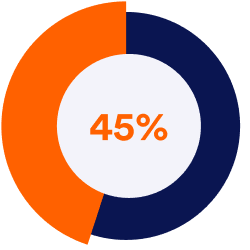
45 percent of nonprofit employees will seek new employment by 2025.
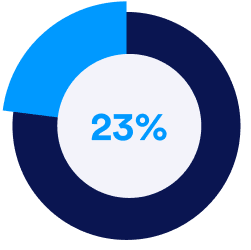
23 percent of them will leave the nonprofit sector.
One way to help workers is by automating work. Process and workflow automation remove menial burdens, freeing up employees to complete tasks that contribute to the organization’s mission. For example, instead of manually inputting donors’ gift amounts into a spreadsheet, employees can confirm their booth details for a local fair, return a phone call from a grant office, or tackle an ever-growing fundraiser to-do list.
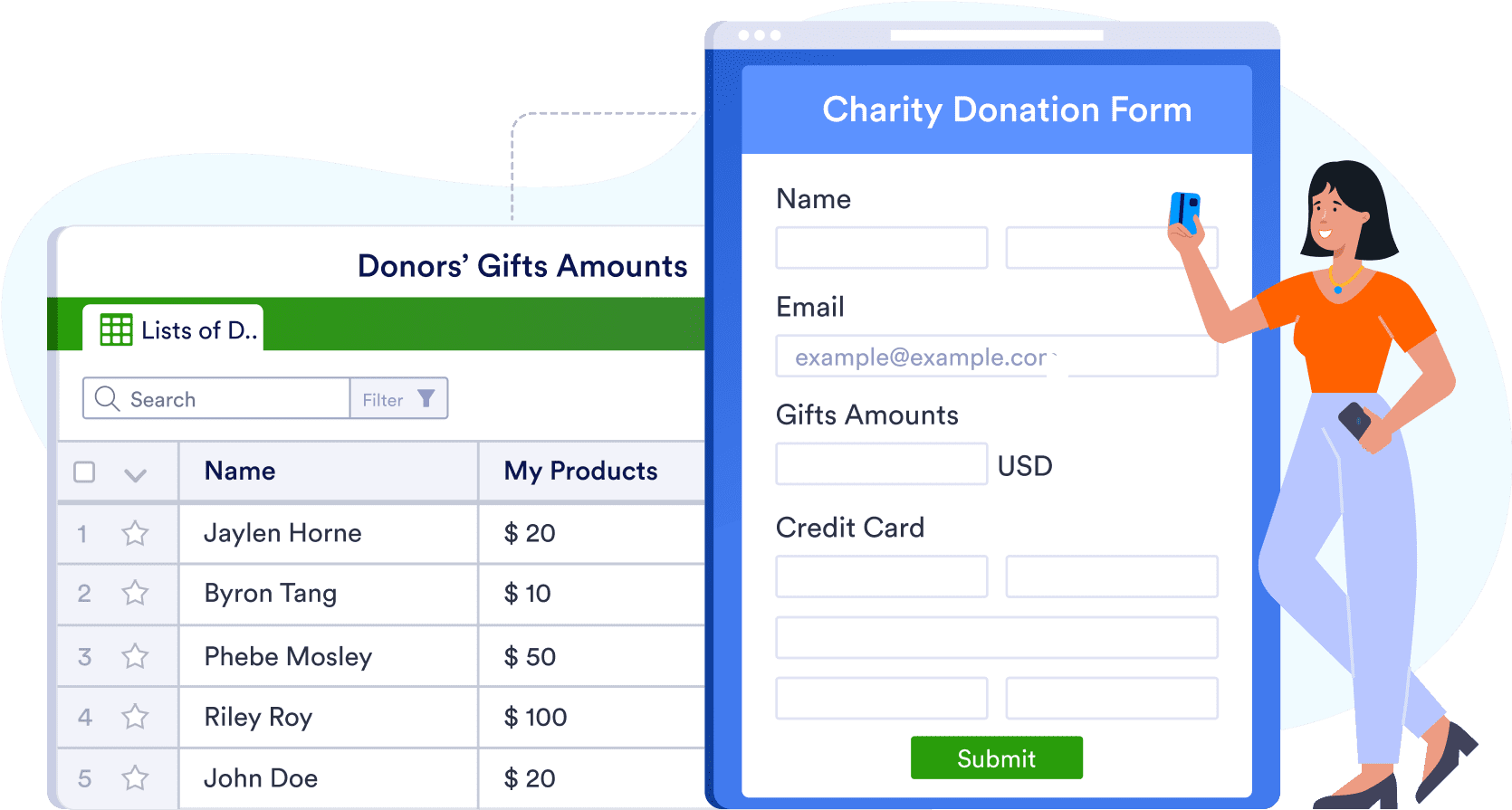
Automation empowers workers by giving them more control over how they complete assignments, which can combat feelings of a lack of control, a commonly cited cause of workplace stress. For instance, an organization can streamline various elements of gala planning, including invitation design. Once an employee customizes an invitation template with branded fonts, colors, and messaging, they can instantly send it to the event planner. Automated processes also decrease mistakes — which are time-consuming to correct and cost companies millions per year.
In addition, workflow systems speed up employee and volunteer onboarding. In a few clicks, new employees or volunteers can complete paperwork, schedule orientations, and watch training videos — all from their homes. As a result, their first weeks are more organized and productive. The stronger the onboarding experience, the more likely new hires are to stay with an organization and the more satisfied and prepared volunteers will be throughout their service.
Streamlined reporting structures are another benefit of technology for nonprofits. Whether you’re allocating donations to the proper campaigns or approving a fundraising budget, automated notifications and approval routing keep internal operations organized and moving — not stuck in an inbox for days.
Optimize your talent pool
Technology solutions for nonprofits help control costs by allowing employees to do more in less time, expanding the impact of their talents
Besides low pay and demanding work, lack of professional development leads many to leave the nonprofit world. People want fulfillment from work, especially in nonprofits, where professional development and leadership growth can result in more opportunities to serve others. No-code technology with a user-friendly interface gives employees the tools to turn their passion for a cause into results — from opening new community centers to providing scholarship opportunities for local students.For example, drag-and-drop functionality can allow one worker to create and duplicate multiple templates for grant applications. A customizable employee dashboard allows everyone on a grant-writing team to view progress and manage multiple applications.
Some nonprofits can make the most of employees’ time and reduce overhead costs by providing remote working options, which many employees now expect. Depending on the job, you can even extend remote opportunities to volunteers.
Allowing your employees to work from anywhere bodes well for employee satisfaction and retention. With online tools and internal mobile apps, volunteers and employees can make a difference without going to an office each day. This is especially beneficial for nonprofits that operate in multiple sites throughout a county or state.
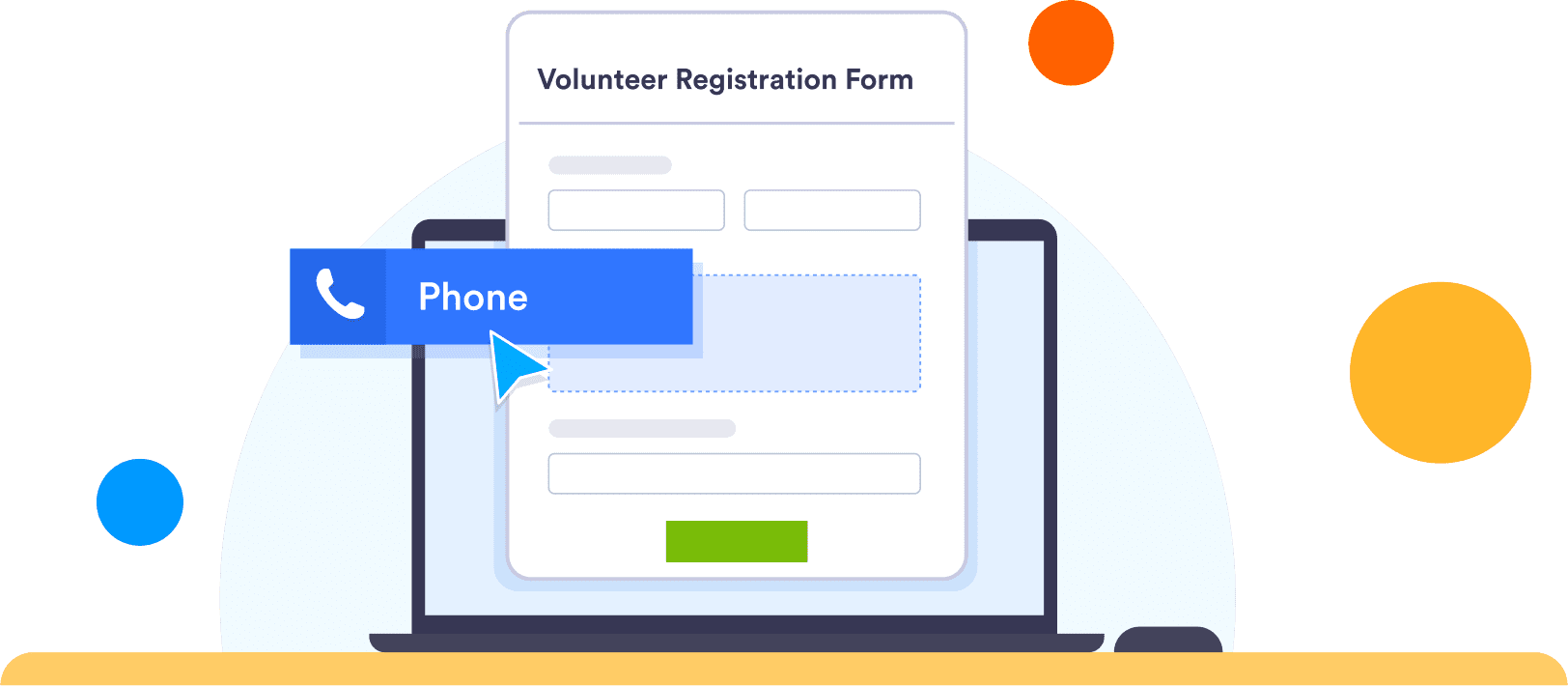
How technology solutions for nonprofits improve transparency and donor engagement
Donors provide much of the funding that determines your nonprofits’ longevity and reach. As a result, you need to maintain donor relationships through communication and trust.
While nearly 60 percent of American adults trust nonprofits, don’t take their confidence for granted. These organizations must continuously earn trust and deepen engagement by improving transparency. The more donors perceive nonprofits as behaving ethically, the more likely they are to trust and continue to give to an organization. Nonprofits can use technology to help maintain the transparency that cultivates trust — among both donors and the general public.

Nearly 60 percent of American adults trust nonprofits.
Donor Surveys
Online surveys are one of the easiest ways to foster greater engagement with existing and prospective donors. From feedback requests to event evaluations, surveys help you learn more about your donors and identify potential new ones. You can then tailor relevant appeals that speak to their concerns. Most importantly, you can remind your donors that their opinions matter enough to directly affect how you run your nonprofit.
Online Forms
Digitizing forms instantly streamlines volunteer recruitment and donation processing. With the right programs to create and share online forms, nonprofits can save time, money, and storage space. Online forms enable electronic donations as well (through online payment processing systems), which makes giving more convenient. An online form builder that creates mobile-friendly forms is critical to serving donors, as more than 300 million people in the U.S. have a smartphone.
Automated and customized donor acknowledgments
Though sending a heartfelt, personalized thank-you email or letter to each donor is ideal, it’s not realistic as your organization grows. The next best option is to use technology to customize donor acknowledgments.
Various nonprofit technology solutions streamline communications by prepopulating donor acknowledgment letters or emails with information from donation forms and even ensuring discounted postal rates based on delivery zones. Some programs enable users to create acknowledgment videos, a truly personal way to engage donors and thank them for their support.
Dynamic e-newsletters
A popular communication method for nonprofits, e-newsletters are invaluable to donors. They’re a great way to encourage passion for your cause and strengthen relationships with your audience — raising the likelihood of steady donations.
Invest in technology that facilitates a rich two-way conversation with donors and that provides the tools for evolving with shifts in donor expectations.
An e-newsletter program helps nonprofits build and schedule content and maintain several email lists to better target current and prospective donors. Users can easily include powerful, bold imagery and videos to share stories about completed projects, campaign statistics, or beneficiaries of a recent donation drive. With online templates, even those who don’t have design experience can create eye-catching callout boxes to make year-to-date stats stand out instead of highlighting them in a bulleted list.
Custom donor portals, apps, and experiences
Many nonprofit technology solutions offer tools to create donor apps and portals. These donor management systems give donors access to valuable information, discussion boards, and more.
Through these apps and portals, you can connect with your donors by sharing your performance over time, overviews of your organization’s financial status, and lists of ongoing projects and upcoming events. If you group your donors by tiers, online portals allow you to give exclusive information to specific groups, enabling you to deepen your relationship with them by detailing how major donations helped people or contributed to specific projects.
Customized donor portals can also include information about upcoming events and volunteer opportunities, downloadable fiscal statements, progress on organizational goals, and news on recent achievements. Consider creating portals for volunteers to track the hours they’ve given to your cause or measure the monetary value of their work.
Safe donor data collection
Digital data collection allows nonprofits to update donor databases and personalize donor interactions. Beyond basic information like names and addresses, you should also gather data on donors’ giving habits and other interactions with your organization. The more you know about donors, the better your relationship with them will be.
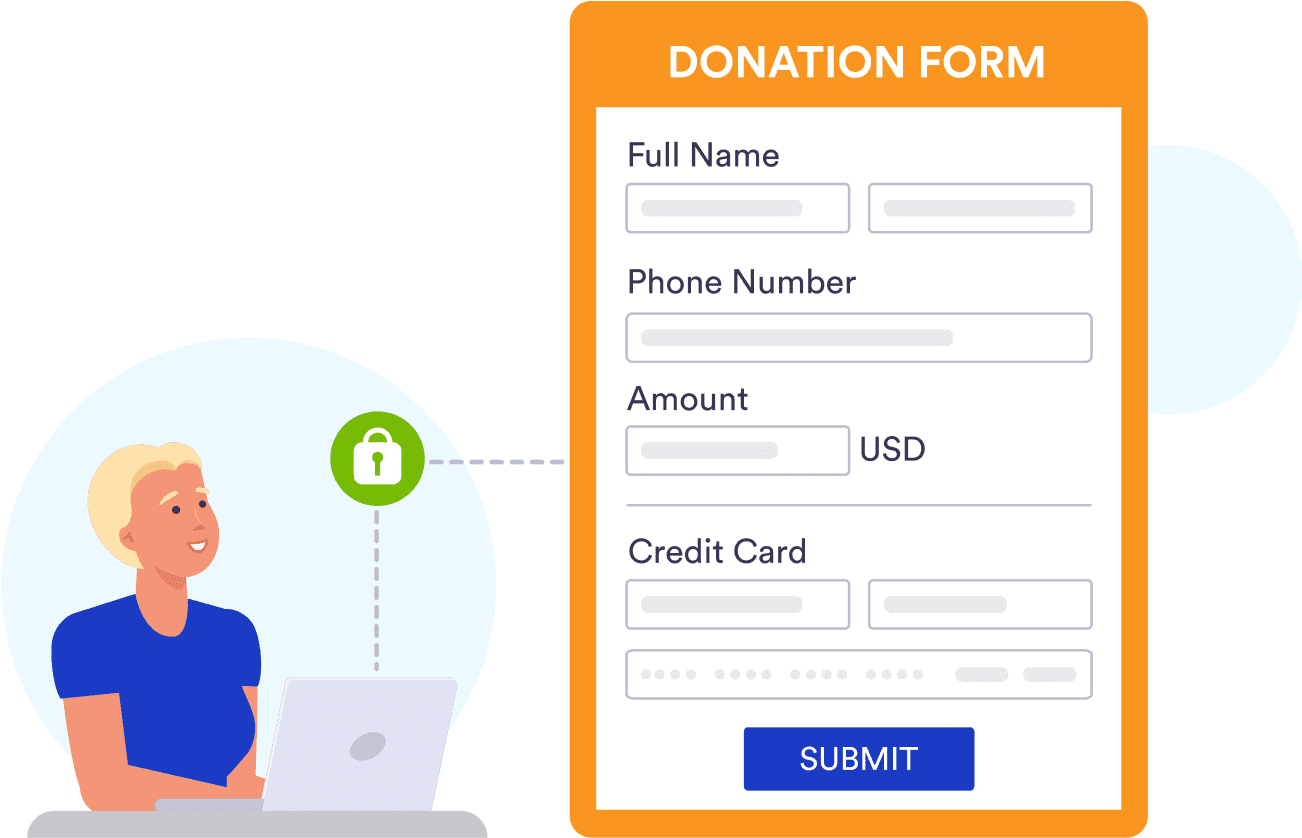
Your technology should help measure and analyze data across all departments to make more actionable decisions that better serve your cause. The ability to see qualitative and quantitative data from finance, marketing, and event coordination shows you which initiatives are doing well and which programs need a boost from a campaign drive. You can then put this data into a format that helps increase or sustain donor support.
But if you don’t collect data safely, this could damage donors’ trust in your organization. Plus, they may hesitate to contribute to a cause, even one they believe in, if it means making themselves vulnerable to data breaches.
By implementing technology that incorporates best security practices into your everyday operations, you can reassure donors their data is encrypted and secure.
Such technology facilitates security elements like requiring strong passwords and multifactor authentication from all users of your apps and cloud system. They also ensure your software and devices are frequently updated. In addition, you should install a firewall to protect your internet connection and a spam and virus filter for your email system.
Website design that contributes to transparency
While several programs make website building effortless, even for those who aren’t tech-savvy, nonprofits should choose a program that makes regular maintenance and visual refreshes simple and important information transparent.
Nonprofit watchdog and evaluator Charity Navigator looks for these five elements on nonprofit websites:
- List of board members
- List of key staff
- Audited financial statements for the fiscal year. Charity Navigator only rates nonprofits on whether or not this information is published and accessible — not what the financial statements reveal.
- IRS Form 990. Similar to audited financials, publishing your most recently filed Form 990 keeps donors informed about your financial status.
- Donor privacy policy. Donors don’t expect their names, addresses, or other details to be exchanged or sold. Donor privacy policies clearly specify how you handle donor data.
With a user-friendly website builder, you can add financial documents directly to your site or post them as downloadable files.
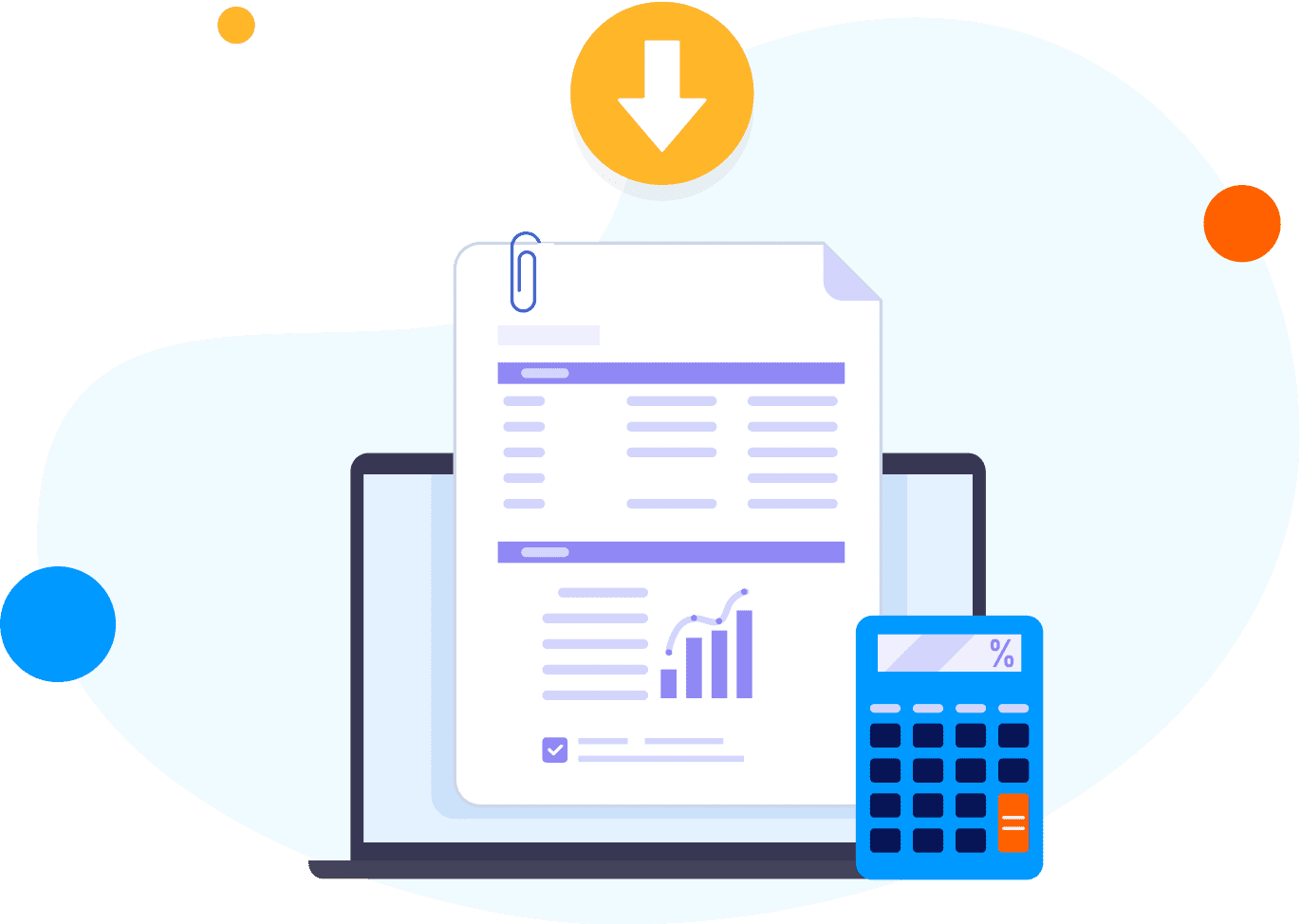
How nonprofit technology solutions demonstrate impact
From more personalized brand experiences to data protection, customers expect more from organizations. It’s no different in the nonprofit sector.
Similar to paying consumers, donors want to support nonprofits that are fulfilling their missions. They appreciate details on completed projects, new programs, and the ways donations are spent for either overhead or fundraising. They also want messaging about progress that is clear, straightforward, and honest.
Technology like social media, dashboards, and real-time impact reporting can help nonprofits share their impact quickly.
Measure and share efficacy
Demonstrating impact can attract more community attention, donors, and volunteers, increasing an organization’s sustainability. Technology for nonprofits can provide donors with real-time information about project progress, goal-meeting, and general updates. These tools help nonprofits quantify their work and its results — and then make the information accessible through shareable spreadsheets and reports.
Your nonprofit will only know that it is indeed helping individuals, solving problems in communities, and protecting the environment etc., if it is evaluating its performance.
To help measure impact, the National Council of Nonprofits suggests a four-step process. Here’s how technology can support each one:
- Define what success is for your nonprofit. In this step, you can use technology to record ideas from brainstorming sessions.
- Build a realistic plan with practical goals and deadlines. Outline the plan in shareable, editable online documents.
- Collect and store data as you work toward your goals to see if you’re heading in the right direction. You can use online surveys and status report forms that update spreadsheets to do this.
- Share the results with your donors. You can send a report via email or a customized donor portal. You can also use social media, apps, and email newsletters to share event photos and videos.
Consolidate data
Beyond measuring information about projects and milestones, nonprofits need to find ways to share that information. Thankfully, cloud-based nonprofit technology solutions centralize data storage and break down the silos often found in nonprofits.
If data and processes are poorly managed across departments, they’re probably not well organized or accessible to donors, either, which can affect trust and jeopardize funding. A system that helps nonprofits create beautiful reports strengthens branding and proves impact to donors as well as boards of directors and grant offices.
Prioritize brand consistency
A consistent, recognizable brand is key to demonstrating impact as it creates awareness among donors, volunteers, and the general public. Elevated, professional branding helps nonprofits show their best selves, aligning their values to a polished visual look that improves public image and the donor experience.
With customizable, shareable templates, employees can ensure that online forms, donor surveys, and dashboards all have the same logo, colors, fonts, voice, tone, and style. These tools also encourage team collaboration and make tasks less complicated for employees. Even those who aren’t artistically inclined can work together to produce visually coordinated messages across social media platforms, websites, PDFs, reports, and more.
Protect donor data and privacy
To help protect donors from potential data breaches, the Nonprofit Technology Network recommends conducting a self audit of what data you collect, where it’s stored, and who’s responsible for it. Do you need all of it, or can you mitigate risk even further by getting rid of some of it?
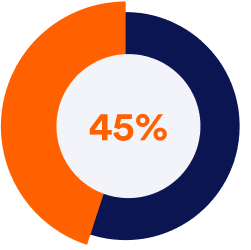
45% of nonprofits do not have internal policies or procedures in place to manage how data is shared with external agencies.
Implement antivirus technology across the organization to protect team members. Anti-malware solutions block suspicious downloads and scan systems for potential cyber breaches, while data privacy software helps you manage and store data. Better yet, choose one solution with built-in antivirus tools.
Meet and maintain compliance standards
Donor data protection goes hand in hand with ensuring compliance with industry and local regulations. A unified system makes it easier to follow these laws while assuring donors their information is safe. Remaining compliant with local regulations is also key to retaining tax-exempt status and other licenses and certifications.
Nonprofit technology solutions help you comply with local, state, and federal regulations by tracking all forms of funding, including grants and donations. Through special accounting features, these types of solutions help you manage your budgeting and financial reports, track donations, generate Form 990s, and even minimize redundant data entry — all in one platform.
Next steps to implementing technology for nonprofits
Digital transformation in the nonprofit sector doesn’t have to be overwhelming. You can start by digitizing your existing processes for a smoother transition.
Here’s how you can apply everything you just learned into a realistic game plan.
Conduct a tech audit
You first need to know what to improve, which is why conducting a tech audit is the first step to a powerful, effective digital strategy. Auditing your current tools allows you to see if they’re expensive, complex, or just not yielding the results you need.
A proper nonprofit tech assessment requires you to consider all parts of your organization — including staff skills, donor communication, and budget — and analyze how they work (or don’t) with your current tech setup. Create a list of the ways you currently use tech (online volunteer registration forms, automated donor acknowledgement letters, online payment processing options, etc.). Then ask yourself a few questions:
- Which processes can be consolidated into one solution?
- Which programs can be replaced or updated?
- Does existing software align with our short-term and long-term goals? If not, what’s missing?
- How much do we invest in tech annually? Should we spend more? Are there discounts available?
- Do certain technical aspects of our nonprofit need an urgent refresh (like our website, donor management system, or network security)?
- Which updates should we prioritize?
- Are our current systems scalable?
Though they can be cumbersome, tech assessments shed light on missing or underused processes. They are one of the only ways you’ll better understand where you can (and should) spend your time, money, and effort.
Survey your staff
Just as it’s essential for nonprofits to survey donors to learn more about them, it’s vital to check in with employees. Ask them how they spend their time, which processes have troublesome bottlenecks, and which tasks drain too much of their energy. Employee feedback surveys are great morale boosters as well because they remind both new and established staff that their opinions and concerns matter.
Once you combine the results of your tech audit and employee surveys, you can better understand the features to look for in a tech solution.

Find a tech partner
The most critical step on your digital strategy to-do list is finding a secure tech vendor, preferably one that values innovation and has a solution that can scale alongside your nonprofit. Before you sign a contract, put potential solutions to the test with thorough research — take advantage of demos, free trials, and industry discounts, and look at client testimonials and case studies.
When shopping around, be on the lookout for extraneous platform costs, such as setup, storage, and user fees. The goal is to cut expenses with tech, not incur more. Once you find a provider you like, request a service level agreement (SLA) that outlines everything you discussed with them — from guaranteed uptime to customer service response times.
Start slow and scale
Introducing new nonprofit technology solutions and optimizing the ones you have takes time and patience. It’s about the long game, which is why you shouldn’t overwhelm your team with too much change at once. Instead, begin with one department or workflow and gradually adopt the new or optimized technology across the organization.
The future of nonprofit organizations — powered by technology
No matter how broad or narrow your nonprofit’s focus, now is the time to embrace technology. Digitization will bring you up to speed with other nonprofits and for-profits, making partnerships more fruitful. Technology gives you the flexibility to handle unexpected emergencies in your community and stay nimble during nationwide uncertainty or sweeping change. Powered by technology, your nonprofit will become more resilient, increasing your standing and imbuing pride in your workforce and volunteers.
With the right technology solutions for nonprofits, you can better fulfill your mission to help others and make the world a little better.
